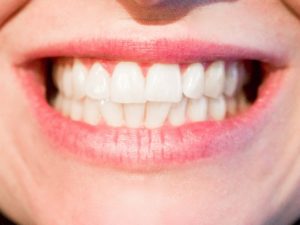Pediatric Dentist in Pelham, AL
 Your child’s mouth contains hundreds of bacteria. Before your child reaches for the toothbrush and mouthwash, understand that not all bacteria are bad. Here’s what you need to know about the bacteria that makes its home in your child’s mouth.
Your child’s mouth contains hundreds of bacteria. Before your child reaches for the toothbrush and mouthwash, understand that not all bacteria are bad. Here’s what you need to know about the bacteria that makes its home in your child’s mouth.
Bacteria Basics
More than 700 different oral bacteria species have been detected. Most people usually have less than 10% of these different strains in their mouth at one time. Different strains have different purposes. Bacteria that are harmless and help digest food are known as probiotics. Other types of bacteria help keep your child’s teeth and gums healthy. The troublemakers are those that contribute to decay and periodontal disease.
The Dangers of Bacteria
Bacteria constantly grow and multiply in your child’s mouth. According to Registered Dental Hygienist Magazine, certain bacteria species can double their population in 20 minutes if conditions are right. They feed on starches and sugars that are the byproduct of the food and drinks your child consumes throughout the day. Certain bacteria types produce an acid while they feed. This acid erodes your child’s tooth enamel, leaving their teeth susceptible to decay.
Maintain a Healthy Mouth
The best way to manage the bacteria in your child’s mouth is to maintain excellent oral hygiene. Brushing at least twice each day for two full minutes and flossing regularly is the best way to keep bacteria in check. You may want to consider an antibacterial mouthwash. Another key element to maintaining optimal oral health is sticking to a healthy diet. By avoiding or cutting back on foods and drinks that contain high amounts of sugars, acids, and starches, you can reduce the multiplication of bacteria that feed on these byproducts.
Not all bacteria are out to harm your child’s teeth. Bacteria can be incredibly helpful in maintaining your child’s overall heath. To help protect your child’s mouth and teeth against the bad bacteria strains, keep them following their oral hygiene routine. During your next visit to our office, we will provide a thorough cleaning and check for decay. We will also screen for any signs of other oral diseases.
For more information on keeping your child’s mouth healthy, please contact our team.

 It has long been known that dairy products contain high amounts of calcium, which is important for developing and maintaining strong teeth and bones. However, not all dairy works in the same ways. Did you know that a recent study has found that cheese can actually help protect teeth against cavities?
It has long been known that dairy products contain high amounts of calcium, which is important for developing and maintaining strong teeth and bones. However, not all dairy works in the same ways. Did you know that a recent study has found that cheese can actually help protect teeth against cavities? You want to save time and money, so you take your child to the emergency room for a dental problem. It’s a growing trend especially among parents, but you should generally avoid using the emergency room when dental problems occur. We understand you want your child to receive the best available care in the quickest manner possible. However, it is important to know the best place to seek out for dental issues is often our office.
You want to save time and money, so you take your child to the emergency room for a dental problem. It’s a growing trend especially among parents, but you should generally avoid using the emergency room when dental problems occur. We understand you want your child to receive the best available care in the quickest manner possible. However, it is important to know the best place to seek out for dental issues is often our office. Our dentist might suggest dental sealants for your child during a visit to our office. Sealants are a way to protect your teeth against decay. With any dental treatment, it helps to understand the procedure and how it can impact your child’s oral health.
Our dentist might suggest dental sealants for your child during a visit to our office. Sealants are a way to protect your teeth against decay. With any dental treatment, it helps to understand the procedure and how it can impact your child’s oral health. Hoover Dentist
Hoover Dentist





